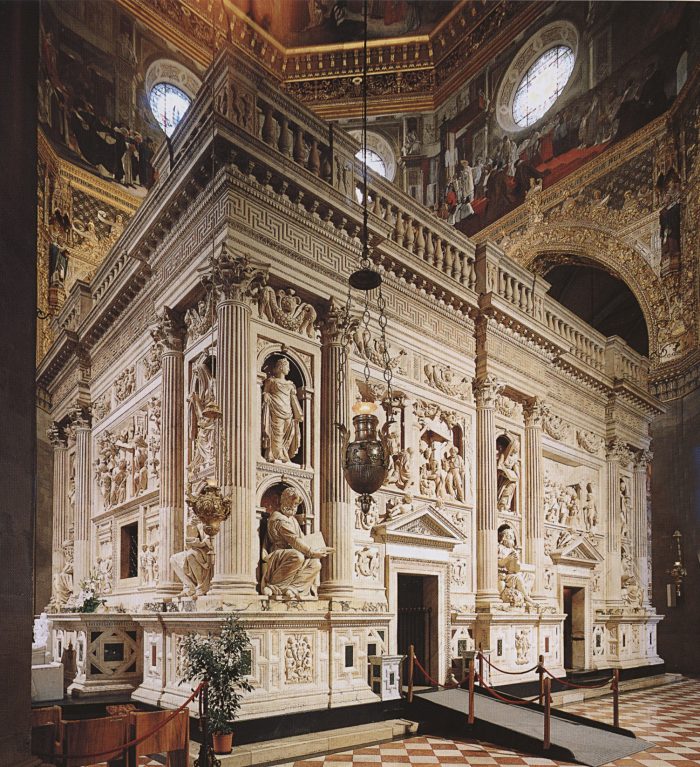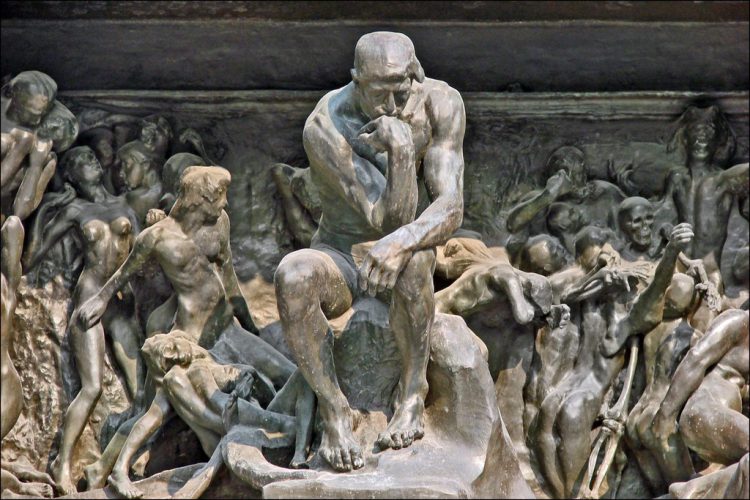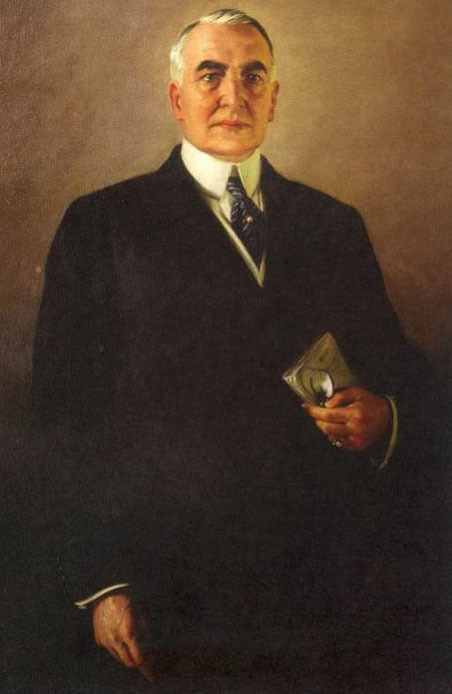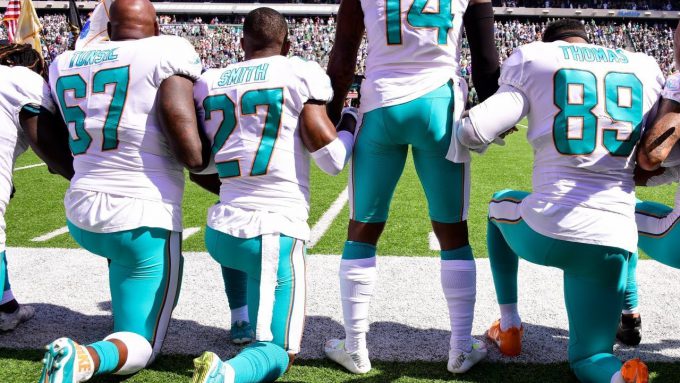How much do Protestants associate the greatest hits of their churches’ history with anything like what Roman Catholics sometimes teach and believe about the House of Loreto. According to the Catholic Encyclopedia:
Since the fifteenth century, and possibly even earlier, the “Holy House” of Loreto has been numbered among the most famous shrines of Italy. Loreto is a small town a few miles south of Ancona and near the sea. … this building is honoured by Christians as the veritable cottage at Nazareth in which the Holy Family lived, and the Word became incarnate. … Angels conveyed this House from Palestine to the town Tersato in Illyria in the year of salvation 1291 in the pontificate of Nicholas IV. Three years later, in the beginning of the pontificate of Boniface VIII, it was carried again by the ministry of angels and placed in a wood near this hill, in the vicinity of Recanati, in the March of Ancona; where having changed its station thrice in the course of a year, at length, by the will of God, it took up its permanent position on this spot [six] hundred years ago. Ever since that time, both the extraordinary nature of the event having called forth the admiring wonder of the neighbouring people and the fame of the miracles wrought in this sanctuary having spread far and wide, this Holy House, whose walls do not rest on any foundation and yet remain solid and uninjured after so many centuries, has been held in reverence by all nations.”
Got that? The house where Mary and Joseph lived in Nazareth is now in Italy. No construction company performed the move. No, angels did. They moved the house not once but three — COUNT ‘EM THREE!! — times (or is it four?).
Are these miracles merely the outworking of local traditions and pious cults in southern Italy? No. Popes have approved these stories as true.
More than forty-seven popes have in various ways rendered honour to the shrine, and an immense number of Bulls and Briefs proclaim without qualification the identity of the Santa Casa di Loreto with the Holy House of Nazareth. As lately as 1894 Leo XIII, in a Brief conceding various spiritual favours for the sixth centenary of the translation of the Santa Casa to Loreto, summed up its history in these words: “The happy House of Nazareth is justly regarded and honoured as one of the most sacred monuments of the Christian Faith; and this is made clear by the many diplomas and acts, gifts and privileges accorded by Our predecessors. No sooner was it, as the annals of the Church bear witness, miraculously translated to Italy and exposed to the veneration of the faithful on the hills of Loreto than it drew to itself the fervent devotion and pious aspiration of all, and as the ages rolled on, it maintained this devotion ever ardent.”
Then the Catholic Encyclopedia’s authors go on to list the reasons for the authenticity of these miracles:
(1) The reiterated approval of the tradition by many different popes from Julius II in 1511 down to the present day. This approval was emphasized liturgically by an insertion in the Roman Martyrologium in 1669 and the concession of a proper Office and Mass in 1699, and it has been ratified by the deep veneration paid to the shrine by such holy men as St. Charles Borromeo, St. Francis de Sales, St. Ignatius Loyola, St. Alphonsus Liguori, and many other servants of God.
(2) Loreto has been for centuries the scene of numerous miraculous cures. Even the skeptical Montaigne in 1582 professed himself a believer in the reality of these (Waters, “Journal of Montaigne’s Travels”, II, 197-207).
(3) The stone on which the original walls of the Santa Casa are built and the mortar used in their construction are not such as are known in the neighbourhood of Loreto. But both stone and mortar are, it is alleged, chemically identical with the materials most commonly found in Nazareth.
(4) The Santa Casa does not rest and has never rested upon foundations sunk into the earth where it now stands. The point was formally investigated in 1751 under Benedict XIV. What was then found is therefore fully in accord with the tradition of a building transferred bodily from some more primitive site.
To their credit, the authors also acknowledge that this historical whopper of a story has not held up to scrutiny even from Roman Catholic historians:
It must be acknowledged, however, that recent historical criticism has shown that in other directions the Lauretan tradition is beset with difficulties of the gravest kind. These have been skilfully presented in the much-discussed work of Canon Chevalier, “Notre Dame de Lorette” (Paris, 1906). …The general contention of the work may be summarized under five heads: (1) From the accounts left by pilgrims and others it appears that before the time of the first translation (1291) there was no little cottage venerated at Nazareth which could correspond in any satisfactory way with the present Santa Casa at Loreto. … (2) Oriental chronicles and similar accounts of pilgrims are absolutely silent as to any change which took place in 1291. There is no word of the disappearance at Nazareth of a shrine formerly held in veneration there. … (3) There are charters and other contemporary documents which prove that a church dedicated to the Blessed Virgin already existed at Loreto in the twelfth and thirteenth centuries, that is to say, before the epoch of the supposed translation. (4) When we eliminate certain documents commonly appealed to as early testimonies to the tradition, but demonstrably spurious, we find that no writer can be shown to have heard of the miraculous translation of the Holy House before 1472, i.e., 180 years after the event is supposed to have taken place. … (5) If the papal confirmations of the Loreto tradition are more closely scrutinized it will be perceived that not only are they relatively late (the first Bull mentioning the translation is that of Julius II in 1507), but that they are at first very guarded in expression, for Julius introduces the clause “ut pie creditur et fama est”, while they are obviously dependent upon the extravagant leaflet compiled about 1472 by Teramano.
It is clearly impossible to review here at any length the discussions to which Canon Chevalier’s book has given rise….the balance of recent Catholic opinion, as represented by the more learned Catholic periodicals, is strongly in his favour.
And yet, over one hundred years later, popes still use the site of the house to inspire the faithful and stories from journalists include explanations like this:
The Basilica of the Holy House in Loreto contains the walls of what tradition holds to be the house in which the Virgin Mary lived when the Angel Gabriel announced that she was to give birth to Jesus.
Which of course raises several questions:
1) Isn’t belief in the virgin birth hard enough? Why add a unit of angels with “Wide Load” banners attached below their wings?
2) If Popes can lead the laity astray on historical details like this, are they all that trustworthy on wayward priests, at the low end, or on what Jesus said (by way of oral tradition), at the high end?
3) But let’s not blame the hierarchy entirely. Why are Roman Catholic laity so willing to go along with such myths, legends, and fabrications?
Instances like this make plausible lines like the following from Lyman Beecher, a (trigger warning) New School Presbyterian who was not sure how Roman Catholics would do in a republic:
If [Roman Catholics] could read the Bible, and might and did, their darkened intellect would brighten, and their bowed down mind would rise. If they dared to think for themselves, the contrast of protestant independence with their thralldom, would awaken the desire of equal privileges, and put an end to an arbitrary clerical dominion over trembling superstitious minds. If the pope and potentates of Europe held no dominion over ecclesiastics here, we might trust to time and circumstances to mitigate their ascendance and produce assimilation. But for conscience sake and patronage, the are dependent on the powers that be across the deep, by whom they are sustained and nurtured; and receive and organize all who come, and retain all who are born, while by argument, and a Catholic education, they beguile the children of credulous unsuspecting protestants into their own communion. (Lyman Beecher, Plea for the West, 1834)










